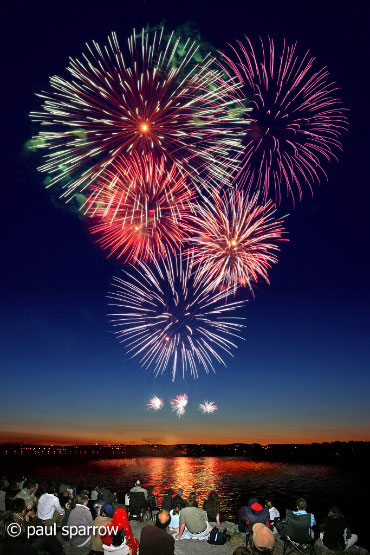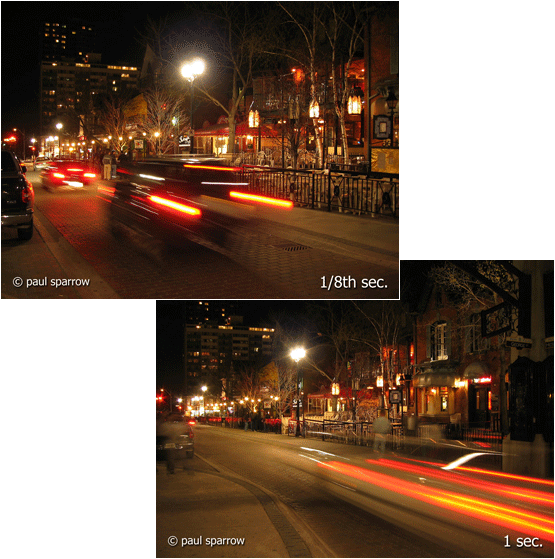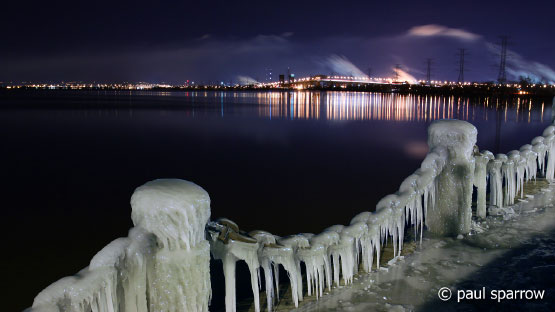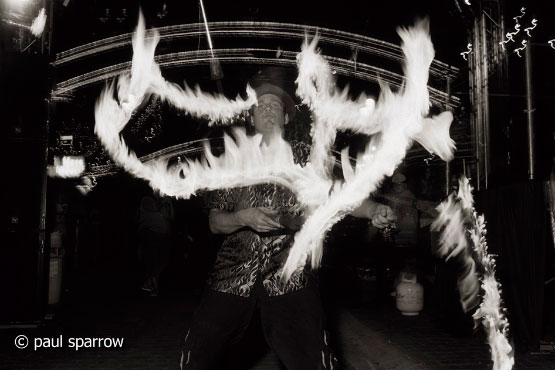Long Exposure Photography
Most of the time we strive to make our images as sharp as possible and we go to great lengths to avoid any kind of subject blurring by using faster shutter speeds or when that's not possible by using a tripod.
However using the long end of the exposure range to intentionally blur all or some of the image can be very creative.
Since representing motion is accomplished through shutter speed let’s start with a relatively fast speed of 1/60th sec. I say relatively fast as this certainly is fast enough to hand hold (depending on the focal length) and with a normal stationary subject would provide a perfectly sharp image.

But even at this shutter speed one can imply a subject’s movement by panning the camera with a subject that is moving at a sufficiently fast speed. If the camera is panned at exactly the right speed in conjunction with the subject then the background is blurred but the subject remains sharp.

If the shutter speed is slowed even further down to say ¼ sec. then even more blurring takes place and it sometimes becomes more difficult to keep the subject sharp. This is not necessarily a bad thing as movement in the subject can be very dynamic.
The major problem when trying to use slower shutter speeds during the daylight hours is that too much light is now entering the camera even when a small aperture like f16 or f22 is used. Using a low ISO (100) helps but it may be necessary to add a neutral density filter to your lens to allow for a longer exposure.
Implying movement were no movement is present can be accomplished by moving the camera (say in small circles or in a linear motion) to create an abstract “”Monet” style to the image. In all cases when you’re panning or moving the camera to imply motion make sure you turn OFF any image stabilization.

You can also imply motion to a moving subject by using much longer exposures (approaching 1 sec.) while the camera is on a tripod. This makes sure those parts of the subject that are not in motion will remain perfectly sharp while any moving elements (like water) become softened to the point where no detail is recorded.

It’s advisable to use a cable release or the camera’s self timer to avoid any camera movement that would blur the background due to camera movement.
When night falls long exposures can be used to create light trails with subjects that are illuminated. By zooming the lens during the exposure the motion of the subject can be further abstracted to create very dynamic imagery.

Fireworks are another subject that when photographed at shutter speeds like 1 or 2 secs. reveal the structure of the shell’s burst. The longer the shutter speed the larger the trails will appear. When using these longer shutter speeds the lens aperture is used to control overall exposure with larger apertures (f2.8) usually creating brighter less intense colours while smaller apertures (f8 or f11) creating more saturated colours.

Again it's advisable to use a lower ISO of 100 rather than a high ISO value. This allows for longer shutter speeds to be used without overexposing the colour of the fireworks.
Light trails created by moving vehicles at night can have radically different appearances depending on what shutter speed is used. Shorter speeds like 1/8th sec. will show parts of the car in motion as well as shorter light trails while speeds approaching 1 sec. will tend to blur the car completely and will create longer trails.

At longer exposures of 10 to 30 secs if the camera is placed inside a car while it’s in motion and is secured such that it doesn’t move then any movement of the vehicle will create light trials outside the windows while the interior remains sharp.

And if the camera is rotated during a long exposure while the vehicle is in motion then light trails resembling spirals can occur.

Again it's better with images that illustrate movement of illuminated lights to use a lower ISO of 100 rather than a high ISO value. This allows for longer shutter speeds to be used without overexposing the colour of the lights.
Very long exposures can be used to produce images of very dimly lit scenes. Extremely long exposures at night of 10 to 20 minutes can sometimes reveal details that cannot be seen by the naked eye.

Here the exposure is built up over time and anything moving in the scene (like people) will completely disappear.
Often with these very long exposures sensor “noise” increases dramatically. This can either be reduced through the use of the camera’s noise reduction settings or after the image is taken when it is processed in software.
Long exposures using available light can also be combined with flash to freeze parts of the image and blur others. This creates a sense of movement that has both the static subject frozen in time and the dynamic movement that imparts energy.

© Paul Sparrow 2013